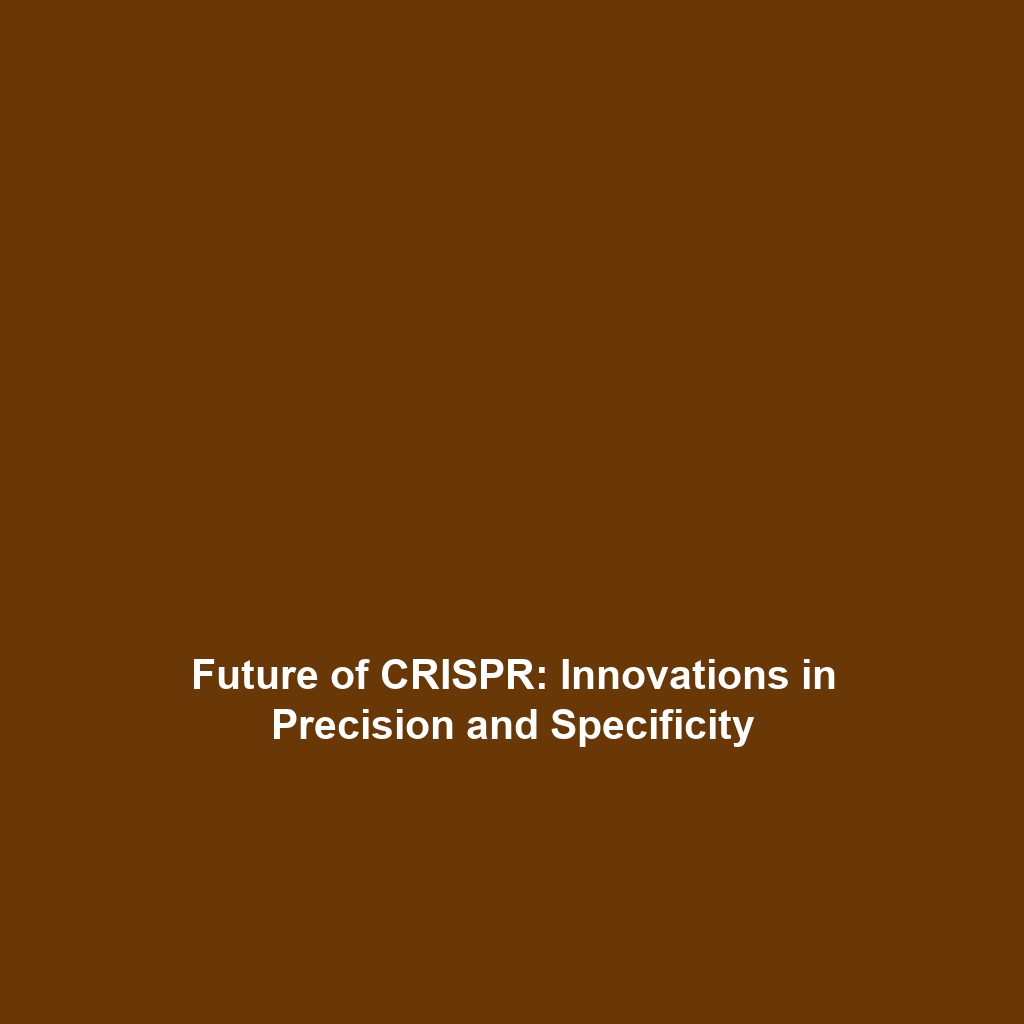The Impact of Human Genome Project on CRISPR-Cas9 Technologies
Introduction
The Human Genome Project (HGP) has revolutionized our understanding of human genetics and laid the groundwork for subsequent scientific advancements, such as gene-editing technologies like CRISPR-Cas9. Although CRISPR-Cas9 was developed after the HGP, it owes much of its foundational knowledge to the insights gained from this monumental project. By mapping the human DNA sequence, the HGP has provided critical resources for understanding gene functions, variations, and the mechanisms of genetic diseases, enabling the development of more precise and effective gene-editing technologies.
Key Concepts
Gene Editing and the HGP’s Contributions
Gene-editing technologies, particularly CRISPR-Cas9, leverage the genomic mapping achieved through the Human Genome Project. Major concepts include:
- CRISPR-Cas9 Mechanism: Based on a natural defense mechanism in bacteria, CRISPR-Cas9 allows for targeted changes to DNA sequences.
- Genomic Insights: The HGP’s comprehensive data has guided researchers in identifying gene locations and functions, essential for effective editing.
- Ethical Considerations: The advancements raise many ethical questions that interplay with the information rendered by the HGP.
Applications and Real-World Uses
CRISPR-Cas9 has transformed numerous fields, significantly informed by the knowledge obtained from the Human Genome Project. Key applications include:
- Medical Treatments: Editing genes associated with genetic disorders, such as sickle cell disease and cystic fibrosis.
- Agricultural Improvements: Enhancing crop resistance to pests and diseases, ensuring food security.
- Biomedical Research: Model organisms developed for studying diseases to investigate potential therapies.
Current Challenges
Despite its potential, the application of CRISPR-Cas9 technology presents several challenges:
- Off-Target Effects: Unintended modifications in the genome that could lead to unforeseen consequences.
- Ethical Issues: Legal and moral questions surrounding the extent of genetic modifications and their implications.
- Regulatory Hurdles: Lack of uniform guidelines and regulations governing the use of gene-editing technologies.
Future Research and Innovations
As gene-editing technologies continue to evolve, numerous innovations are on the horizon:
- Next-Generation CRISPR: Development of more precise editing tools that minimize off-target effects.
- Gene Therapy Applications: Advancements in treating complex diseases through targeted genetic interventions.
- Integration with AI: Using artificial intelligence to improve precision and efficiency in gene editing.
Conclusion
Overall, the advancements in CRISPR-Cas9 gene-editing technologies are profoundly shaped by the Human Genome Project. Through the foundational knowledge provided by the HGP, researchers are unlocking new possibilities in medicine, agriculture, and biotechnology. As we move forward, continued research and ethical considerations will be vital in navigating the future applications of gene editing. For further reading on the Human Genome Project and gene-editing technologies, visit our pages on Human Genome Project Insights and Advancements in Gene Editing.




